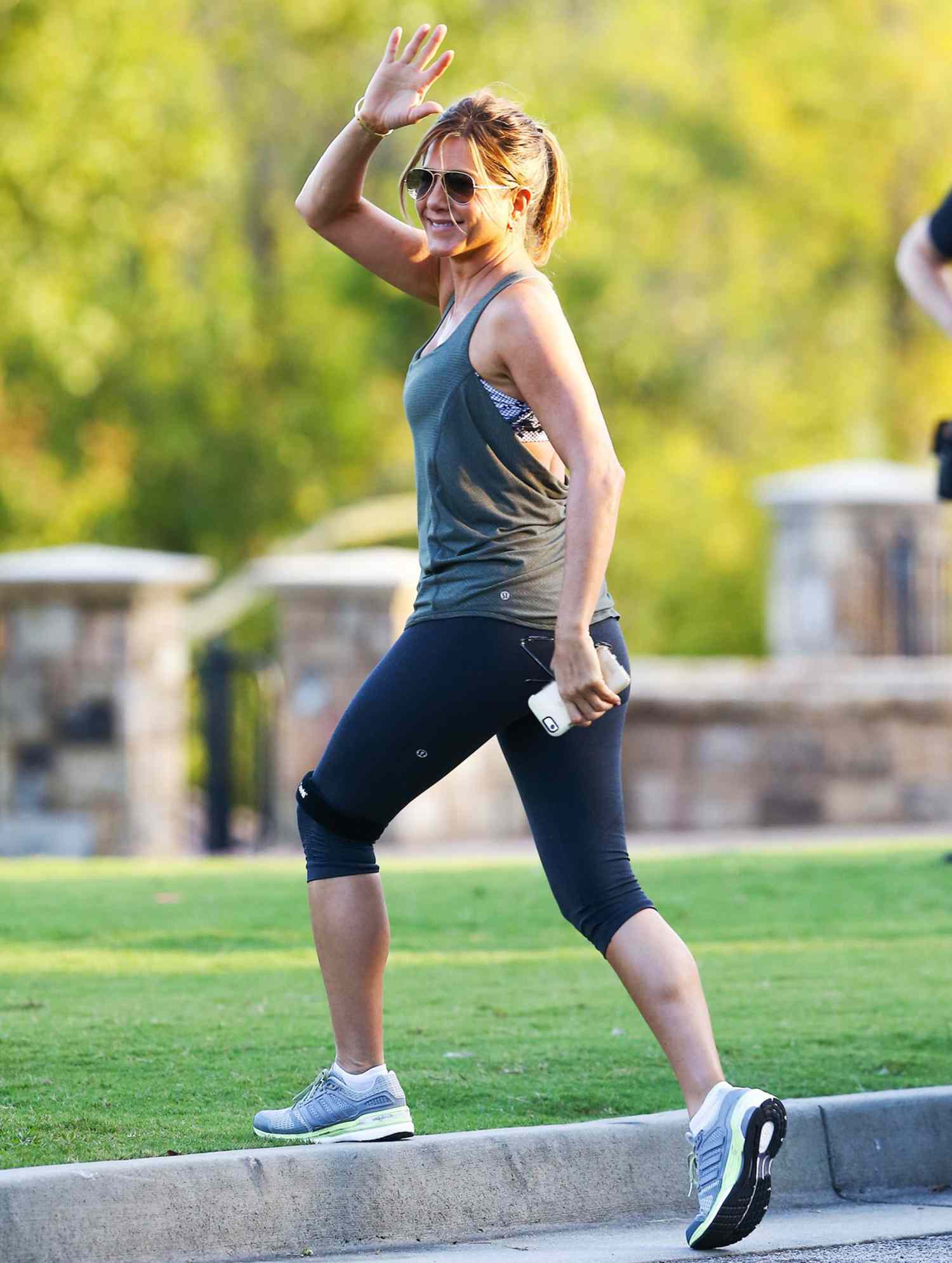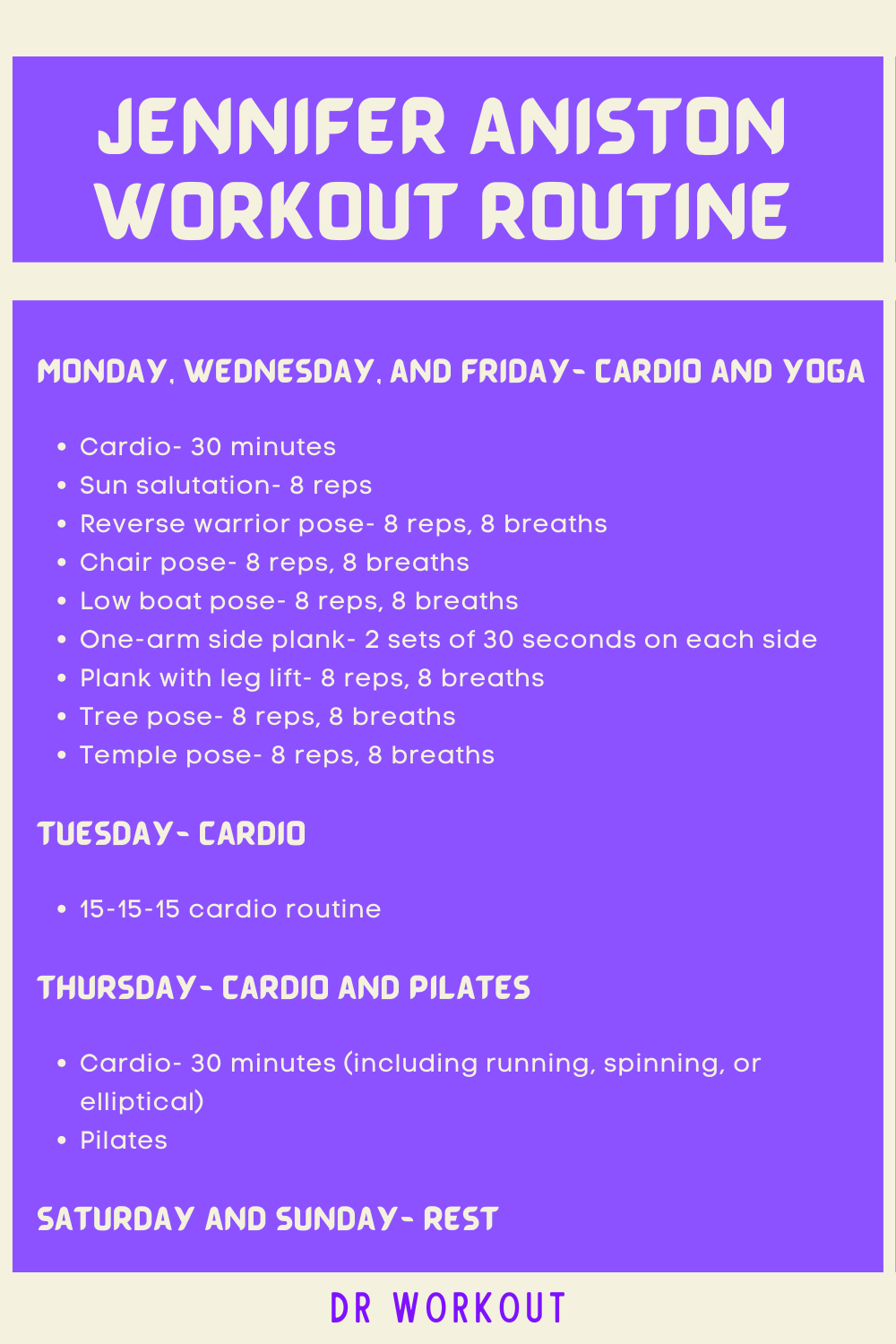Jennifer Aniston is known for her timeless beauty and enviable physique.
Many admire her dedication to health and wellness.
Now, Jennifer Aniston's trainer is sharing insights.
Dani Coleman reveals her ideal workout schedule.
This promises maximum results.
The 3-4 Day Rule
Dani Coleman is Pvovle's head trainer.
She spoke exclusively with E! News' Francesca Amiker.
She shared her recommendations for exercise frequency.
"I always tell clients I aim for three to four times a week," Coleman stated.
"Four being a trainer’s dream."
"Three I think realistic a little bit more for people’s schedules."
This provides a flexible yet effective approach.
It allows for consistency without overwhelming commitments.
The goal is sustainable fitness.
Consistency is key.
Start Small, Scale Up
Feeling overwhelmed by fitness goals is common.
Coleman emphasizes a crucial strategy.
"Start small," Coleman shared.
"It sounds so cliché and simple."
The concept is powerful in its simplicity.
Small steps lead to significant progress.
Focus on building a habit.
Then gradually increase intensity and duration.
This prevents burnout.
This promotes long-term adherence.
Consistency Over Intensity
Coleman prioritizes consistency.
"I’ll choose consistency over intensity any day for clients," she explained.
High-intensity workouts are effective.
They are not sustainable for everyone.
Consistent moderate exercise yields better results.
Regular movement is more beneficial than sporadic intense sessions.
Consistency creates a positive feedback loop.
It makes exercise a natural part of life.
This is a sustainable path.
Adding Daily Movement
Coleman wants to help people get into the habit of adding daily movement.
Incorporate activity into your routine.
Take the stairs instead of the elevator.
Walk during your lunch break.
Do some stretching exercises at home.
Small changes accumulate over time.
These small actions contribute to overall fitness and well-being.
Movement becomes a way of life.
It's not just a task.
The Mental Aspect
Fitness is not just physical.
The mental aspect is equally important.
Avoid putting excessive pressure on yourself.
"And if you feel like it hasn’t been your day, your week, your month, or even your year when it comes to sticking to a regimen, well, stop pressuring yourself."
This advice is relatable and encouraging.
Everyone experiences setbacks.
It's essential to be kind to yourself.
Forgive yourself and move forward.
Don't let one bad day derail your progress.
Building a Routine
Start by setting realistic goals.
Choose activities you enjoy.
This makes exercise more appealing.
Schedule your workouts.
Treat them like important appointments.
Find a workout buddy.
This provides accountability and motivation.
Track your progress.
This helps you stay focused and motivated.
Celebrate your achievements.
Reward yourself for reaching milestones.
The Benefits of Exercise
Exercise offers numerous benefits.
It improves physical health.
It boosts mental well-being.
It reduces the risk of chronic diseases.
It increases energy levels.
It improves sleep quality.
It enhances self-esteem.
Exercise contributes to a longer and healthier life.
It impacts your life.
Adapting the Schedule
Coleman's recommendations are a guideline.
Adjust the schedule to fit your individual needs and preferences.
Consider your fitness level.
Consider your goals.
Consider your schedule.
Listen to your body.
Rest when you need it.
Don't push yourself too hard.
Adapt the plan.
Final Thoughts
Jennifer Aniston's trainer provides valuable advice.
Prioritize consistency.
Start small.
Scale up gradually.
Listen to your body.
Be kind to yourself.
Add daily movement.
Most importantly, enjoy the process.
Fitness is a journey.
Embrace it.
Achieve maximum results.
Dani Coleman's approach is about sustainable habits.
It's about long-term well-being.
It's about overall health.
Putting it into practice.
So, how do we translate Dani Coleman's advice into a tangible workout schedule?
Here's a sample plan to get you started.
Remember, this is a template.
Adjust it to suit your fitness level, preferences, and available time.
Sample Weekly Schedule: 3-Day Option
Day 1: Full-Body Strength Training
Focus on compound exercises.
Squats, lunges, push-ups, rows.
3 sets of 10-12 repetitions.
Day 2: Rest or Active Recovery
Gentle stretching, yoga, or a leisurely walk.
Day 3: Cardio
30-45 minutes of moderate-intensity cardio.
Brisk walking, jogging, cycling, or swimming.
Day 4: Rest
Day 5: Full-Body Strength Training
Similar to Day 1, but you can vary the exercises.
Day 6: Rest or Active Recovery
Day 7: Cardio
30-45 minutes of moderate-intensity cardio.
Sample Weekly Schedule: 4-Day Option
Day 1: Upper Body Strength Training
Focus on chest, back, shoulders, and arms.
Bench press, pull-ups, overhead press, bicep curls.
3 sets of 10-12 repetitions.
Day 2: Lower Body Strength Training
Focus on legs and glutes.
Squats, lunges, deadlifts, hamstring curls.
3 sets of 10-12 repetitions.
Day 3: Rest or Active Recovery
Day 4: Cardio
30-45 minutes of high-intensity interval training (HIIT).
Alternate between short bursts of intense exercise and periods of rest or low-intensity exercise.
Day 5: Active Recovery or Rest
Day 6: Cardio
45-60 minutes of moderate-intensity cardio.
Day 7: Rest
These are just examples.
Modify exercises and the intensity to your liking.
Remember to warm up before each workout and cool down afterward.
Proper form is crucial to prevent injuries.
Consider working with a personal trainer.
They can help you develop a safe and effective workout plan.
They can teach you proper form.
They can guide you through your fitness journey.










